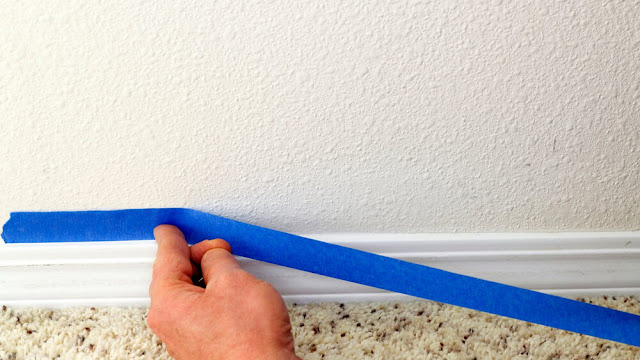In today’s post, we bring to you the concept of MASKING in painting work. Not a prevalent practice in the Bhutanese painting market, the understanding of proper painting methods and their future implication are least considered but the cost is put first and fast. Keeping these entire aside, we hope this information help in one way or other at some point in time.
Well, masking in painting refers to a process where masking tape is covered on certain areas which are not intended for painting. Painting is a messy job; paint gets onto anything that’s not covered. So masking as a preparation before painting is a primary task that attributes to proper finishing, maintaining an accurate line of colours, and ease post painting like cleaning and minimising resource spending.
Though the masking benefits are abundantly but somehow inapplicable in our market, we have narrowed the understanding that is doable as follows;
1. It takes far more time to clean up paint that
ends up where it doesn’t belong than it takes to prevent the paint from getting
there in the first place. Masking reduces clean up time. For ex. as in the
picture, masking off windows with tape and plastic (used newspaper in our case)
protects them from paint spatter. This saves time from scraping up paint dots
on the glass.
- Proper masking speeds work. So long masking
tape is done firmly, paint bleeding is a minor issue compared to trying to
paint along with trim without getting spots of paint in the wrong place.
- Masking allows you to paint on correct
alignment without worrying much about the opposite side. Only those who
tried the art of perfection know how difficult that is to maintain proper
paint lines without masking.
- Masking enables a painter to look like a pro.
They need not have to master fantastic cutting-in skills. Using tape keep
lines straight and the paint where it belongs.
- Masking help maintain visual appeal as it
was. Covering door hinges & knobs and other hard-to-remove hardware
with masking tape or small plastic retains its originality. It not only
irks the property owner but is amateur of the painting firm painting door
knobs and hinges.
- Using drop cloths across the floor or
wherever relevant as masking ensures that floor surfaces are protected
from paint drips.
When masking is not taken care of, the post
painting becomes laborious and cost implications are obvious. Masking is a
critical part of the painting preparations and worth effort for many reasons. The
techniques for masking are the same for indoors or out, cover properly parts
that are not intended to paint. Bam then do the brush stroking, roll the
rollers or spraying that we use.
Note: You can remove
hardware that is easy to replace, keep them in a separate plastic bag and put
it back. Paint shields can be an option in larger area masking scenarios. Remove the MASKING when the paint is sticky
but not entirely dry.



